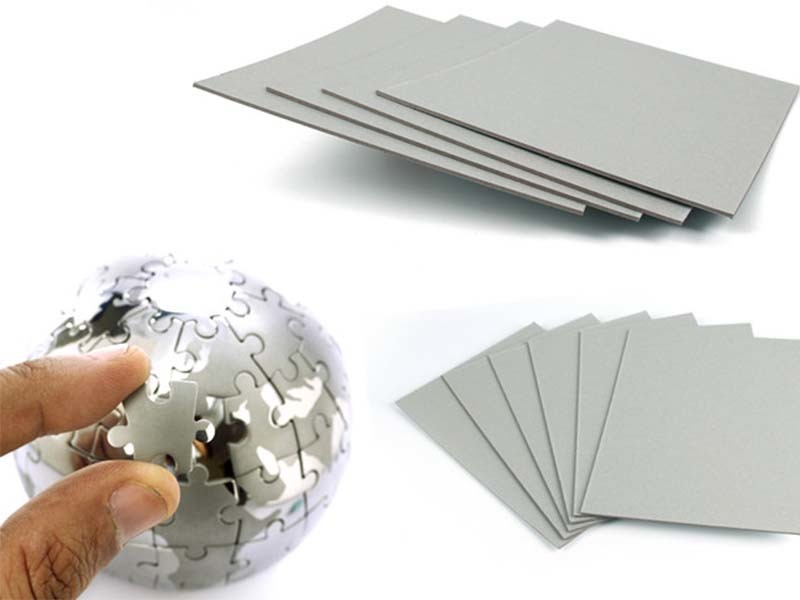Telephone
+86-769-88013336

There are a number of different types, each with its own advantages and disadvantages. Anyone planning to use this type of material needs to be aware of the differences in order to pick the best one for the job. Unlined has a brown finished appearance and is made using a much higher content of brown waste cardboard, such as old corrugated boxes. Grey board is made using a much higher percentage of newsprint, which gives the finished product a more grey appearance. Various additives can be added to the pulp mixture before the finished product is created in order to provide a variety of finishes and properties. For example, a sizing agent can be added if a more moisture resistant product is required.
Manufactured in a variety of thicknesses, with various additions being made makes this material very versatile. As a single ply material it can be made up to 1.25mm thick. If a thicker material is required then two or more plies need to be laminated, or stuck, together. A reel to sheet laminator is the machine used for the lamination process. PVA, or poly vinyl acetate glue is used to bond the ply together and makes for a much stronger finished board. By using the process of lamination, board can be made up to 5mm thick and up to a maximum size of 2000 x 3200mm.
Chipboard is made of pressed fibres to create a compact board which can be used instead of wood. The boards are usually made of recycled paper and are most preferred due to their reduced cost and availability. Grey chipboards come in different thickness and are chosen according to their intended use. They can be used in a variety of ways as detailed below.

Chipboards are widely used in making lightweight cartons which are convenient for keeping goods in transit stable and in their intended place. Shipping products in chipboard packages considerably reduce the flight costs due to their lightweight. Food industries prefer using chipboards for packaging foodstuff such as cereals to ensure that they are preserved at a controlled temperature to avoid contamination and mould build-up due to wetness.
Lightweight chipboards make a convenient product to be used on books and scrapbooking to help in giving shape and protecting pages. Chipboard can be coloured or painted to provide it with an appealing outlook and to make it dirt and water resistant when laminated. Calendars, diaries, notepads, and binders are some of the items where chipboards are commonly used to give them more rigidity which cannot be achieved by the use of plain paper.
Chipboard packaging can also refer to a material that’s made from wood scraps, sawdust and glue. However, in this article we are looking at the material which is manufactured from 100% recycled waste paper that has been turned into a pulp and made into big reels. The reels that are produced can be as much as 1.25mm thick. If a thicker finished product is required then reels can be laminated together using a water based adhesive. This secondary process takes place using a board laminator specially developed for the purpose.
The most popular types can be used for cable reels, box making, pallet layer boards, interleaving boards, backing boards, fabric rolling boards, bedding and upholstery. Another type, known as kraft lined, can be used for picture frames, pallet slip sheets and for making boxes. One further type worth mentioning is display board that is made by gluing two to four plies together. It is popular for use as point of sale, hanging displays, showcards and dump bins.
In its various disguises, it is the perfect material for those concerned about the future of the planet. Unlined, in particular, is 100% environmentally friendly and can be completely recycled.
Copyright © 2019 NEW BAMBOO PAPER (HK) CO., LIMITED | All Rights Reserved